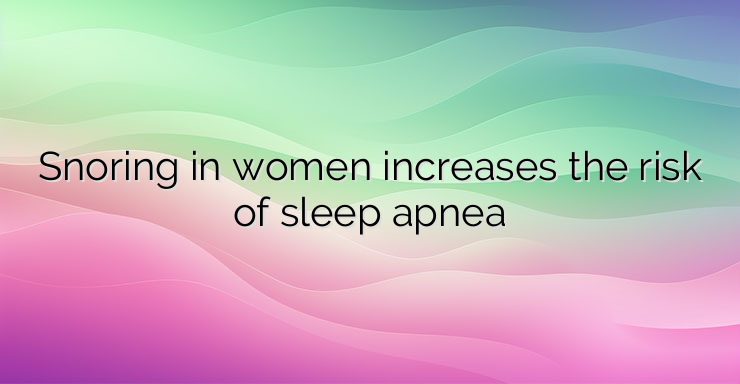Women aged 55 and over who snore at night have a higher risk of developing the serious disease sleep apnea, according to a new study from Tel Aviv University. Sleep apnea is a disease that affects the respiratory system. It is characterized by repeatedly stopping breathing during sleep. As a result, the quality of sleep is disturbed and the amount of oxygen in the blood decreases. In most cases, because the symptoms appear during sleep, women who suffer from this type of breathing disorder do not know that they are affected and that they are at increased risk of sleep apnea. The Tel Aviv study included 112 women aged between 20 and 40 and 116 aged 50 and over. Everyone fills out a special questionnaire, with which specialists aim to get information about the feeling of fatigue in women, the presence of headaches, tension or stiffness in the muscles of the face, neck and jaw, as well as many others. The researchers also noted the women’s physical and demographic indicators, such as body mass index (BMI), neck circumference, occupation, number of children, and marital status. After looking at their answers and performing analyzes aimed at assessing their condition, the experts found that about 15% of older women were at higher risk of developing sleep apnea, compared to only about 3.5% of younger women. They also observed that 11% of women who snore were at increased risk of sleep apnea, compared to only 1% among non-snorers. Usually, snoring is more common in older people. The diagnosis of diseases of the respiratory system, the symptoms of which are manifested at night, is very often late, due to the lack of information among the affected patients. The research was conducted by Dr. Alona Emodi-Perlman, Prof. Ilana Eli, Dr. Javan Sleiman, and Dr. Pesia Friedman-Rubin from the Department of Oral Rehabilitation at the Morris and Gabriela Goldschleger Faculty of Dentistry at Tel Aviv University. The study was published in the Journal of Clinical Medicine. References: https://www.mdpi.com/2077-0383/11/5/1199


Leave a Reply